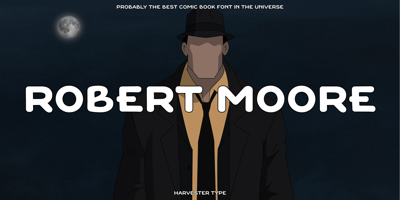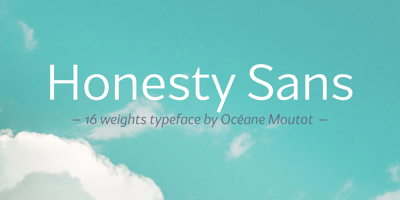Famous Brands' Font Choices and Why They Work
Famous Brands' Font Choices and Why They Work
Behind every iconic brand is a carefully chosen typeface that communicates values, personality, and message at a glance. Let's examine how some of the world's most recognizable companies use typography to build unforgettable identities.
Apple: Helvetica and San Francisco
Apple has long been synonymous with clean, minimalist design. For years, they used Helvetica Neue across their products and marketing—a font that embodies simplicity and precision.
In 2015, Apple introduced San Francisco, their custom typeface designed specifically for optimal readability on screens. This move reinforced their commitment to user experience while maintaining that signature clean aesthetic.
Why it works: The simplicity lets the products shine. Apple doesn't need decorative fonts because their design philosophy centers on removing anything unnecessary. The typography supports this perfectly.
Coca-Cola: Spencerian Script
Coca-Cola's logo, designed in 1886, uses a flowing Spencerian script that has remained virtually unchanged for over a century. This handwritten style was popular in business correspondence during that era.
The script conveys tradition, authenticity, and timeless appeal. Those flowing letters feel personal and friendly, like a handwritten note from an old friend.
Why it works: In a world of constant change, Coca-Cola's script represents consistency and heritage. The font has become so iconic that it's instantly recognizable worldwide, even without the full name visible.
Google: Product Sans
Google created Product Sans, a geometric sans-serif that's friendly, approachable, and modern. The rounded terminals and open letterforms make it feel welcoming rather than corporate or cold.
This custom font appears across Google's products and reinforces their brand identity of being accessible to everyone.
Why it works: Product Sans balances professionalism with playfulness—exactly what Google represents. It's clean enough for serious applications but friendly enough to feel human and approachable.
Nike: Futura
Nike primarily uses Futura, a geometric sans-serif created in 1927. The font is bold, confident, and forward-looking—perfectly aligned with Nike's athletic, ambitious brand personality.
Futura's strong, geometric shapes convey strength and performance. When you see that font paired with the swoosh, you immediately think of athletic excellence.
Why it works: Futura's bold simplicity makes a statement without needing extra embellishment. It's a font that says "just do it" through its confident, no-nonsense letterforms.
The New York Times: Cheltenham
For their logo and headlines, The New York Times uses a modified version of Cheltenham, a serif font that exudes authority and tradition. Serif fonts have long been associated with print journalism and credibility.
This choice reinforces their position as a serious, established news institution. The font literally looks like it belongs in print journalism.
Why it works: In an era of fake news and digital chaos, that classic serif reminds readers of The New York Times' long history and journalistic integrity. The font itself communicates trustworthiness.
Airbnb: Cereal
Airbnb created Cereal, a custom font family that's warm and welcoming—exactly what you'd want from a hospitality brand. The rounded, friendly letterforms feel personal and inviting.
The font works seamlessly across digital and print, maintaining consistency whether you're viewing it on your phone or on a billboard.
Why it works: Cereal embodies Airbnb's mission of making people feel like they belong anywhere. The approachable, human quality of the font reflects the peer-to-peer nature of their service.
FedEx: Futura Bold
FedEx uses Futura Bold with a clever hidden arrow in the negative space between the E and X. The bold weight conveys strength, reliability, and speed—essential qualities for a shipping company.
The font is straightforward and legible, working perfectly on everything from boxes to delivery trucks.
Why it works: Futura Bold is instantly readable and projects confidence. The font doesn't waste time with flourishes—just like FedEx doesn't waste time with deliveries.
Disney: Waltograph
Disney's iconic logo uses a custom script inspired by Walt Disney's signature. This handwritten style feels magical, whimsical, and personal—capturing the essence of Disney's brand.
The font looks playful without being childish, appealing to both kids and adults who embrace their inner child.
Why it works: That script connects directly to Walt Disney himself, adding authenticity and nostalgia. It instantly evokes feelings of wonder, imagination, and childhood magic.
Lessons from the Best
Consistency is Key
Notice how these brands stick with their chosen fonts across all touchpoints. This consistency builds recognition and strengthens brand identity over time.
Custom Fonts Show Commitment
Many top brands invest in custom typefaces. This ensures uniqueness and gives them complete control over their visual identity.
Font Matches Brand Values
Every successful brand's font choice aligns with their core values. Athletic brands choose strong fonts, luxury brands choose elegant ones, tech companies choose modern ones.
Simplicity Often Wins
Most iconic brand fonts are relatively simple. They're memorable without being gimmicky, working across contexts and standing the test of time.
Final Thoughts
Behind every great brand is a font choice that looks effortless but represents careful strategic thinking. These companies understand that typography isn't just about looking good—it's about communicating who they are at a fundamental level.
When choosing fonts for your own projects or brands, study these examples. Ask yourself: what does this font say about my brand? Does it align with my values and personality? Will it still work in ten years?
Great typography builds brands that last.


